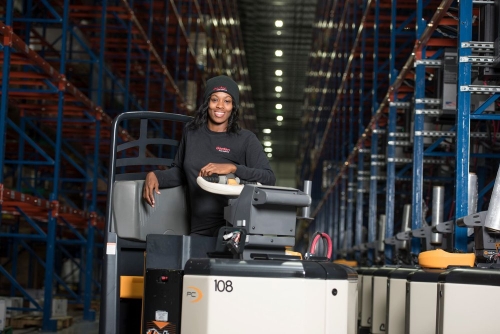Women in Manufacturing: Minding the Gap

The manufacturing industry has been around for centuries. Despite every technological advancement, every declaration of its demise, and every question about what comes next, it’s still here. How? It’s willingness to change, to adapt.
Thanks to local resources, like the North Carolina Manufacturing Institute, those changes are easier to make here in Cabarrus County. Our diverse range of manufacturing businesses, from Corning Inc. to Celgard, keeps our community at the forefront of industry technology, while our available grants and incentives make it possible for companies to get out ahead of manufacturing trends.
The Cabarrus Economic Development Corp. helps our manufacturers grow, adapt, and thrive in an industry that’s often faced with considerable challenges.
In this new decade, that challenge isn’t technology; it’s a shortage of skilled workers in manufacturing. The National Association of Manufacturers (NAM) recently conducted its quarterly survey and found that the inability to attract and retain a quality workforce has been manufacturers’ top concern for the past six quarters. By the time the 2020s end, NAM projects that 4.6 million manufacturing jobs will need to be filled. While that number certainly looms large, a workforce shortage is nothing new for the industry.
Remember World War II? Factories emptied out all over the country as American men went to war. It obliterated the industry’s workforce, and it didn’t happen slowly over a decade; it happened all at once. At the time, it was the biggest workforce crisis manufacturing had ever seen. Then came Rosie the Riveter, a pop culture icon and inspiration to working women across the U.S. Suddenly, shop floors were filled, manufacturing was thriving, and the crisis was averted. All thanks to women.
The solution then was the same as it is today. As Carolyn Lee noted in an article entitled “Women Are Critical to Manufacturing’s Future” for Industry Week, “closing manufacturing’s gender gap is key to closing the skills gap that has limited businesses’ ability to evolve and expand.” So, how do we close that gap?
First, let’s acknowledge that a gap exists. The U.S. Bureau of Labor Statistics reported that 47% of America’s labor force in 2016 was made up of women, yet women only totaled 29% of the manufacturing workforce. Additionally, the U.S. Census Bureau reported that the median earnings for female manufacturing industry workers ($35,158), while higher than that of women in all industries ($30,348), was lower than that for male manufacturing workers ($48,849). $13,691 lower, to be exact. The same report went on to state that “while production, transportation, and material moving occupations employed the largest number of women within the manufacturing industry, women only made up about one-quarter (26.7%) of these workers.”
The disparities are clear, yet they don’t necessarily exist for a lack of trying from manufacturing businesses. A 2014 Women in Manufacturing report found that only 7% of survey respondents listed manufacturing as a field that offers opportunities for young women and 68% stated they were not likely to consider manufacturing as a career path. This issue isn’t as simple as companies failing to hire or promote women, though that is certainly still a concern. The deeper issue is perception.
In order to close the gender gap in manufacturing, we have to change the way women feel about the industry and the opportunities afforded to them within it. Pamela Kan, president of Bishop-Wisecarver, suggests focusing on five areas to help change the perception of manufacturing:
- Working with educators and parents to differentiate myths from reality
- Serving as mentors and role models
- Providing hands-on experiences
- Showcasing innovation/technology
- Highlighting meaningful work
Throughout March, which just so happens to be Women’s History Month, we’re going to do just as Ms. Kan suggests… Focus on these five areas and how they affect a woman’s perception of manufacturing in and around Cabarrus County. We’ll offer resources, spotlight working women, and provide all the insight you need to better understand the importance women play in manufacturing. Stay tuned for our next feature, an interview with Leandra Young, Lead Receiver at Corning Optical Communications – Newton Cable Plant.